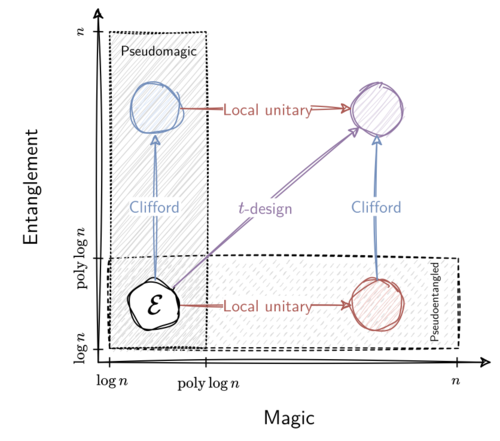It's a kind of magic
In work published in the Physical Review Letters, we introduce ensembles of quantum states arising in quantum computing and many-body theory that, despite featuring low nonstabilizerness and hence “magic”, are actually computationally indistinguishable from those with high nonstabilizerness.
Notions of nonstabilizerness, or “magic,” quantify how nonclassical quantum states are in a precise sense: states exhibiting low nonstabilizerness preclude quantum advantage. We introduce “pseudomagic” ensembles of quantum states that, despite low nonstabilizerness, are computationally indistinguishable from those with high nonstabilizerness. Previously, such computational indistinguishability has been studied with respect to entanglement, introducing the concept of pseudo-entanglement. However, we demonstrate that pseudomagic neither follows from pseudoentanglement nor implies it. In terms of applications, the study of pseudomagic offers fresh insights into the theory of quantum scrambling: it uncovers states that, even though they originate from non-scrambling unitaries, remain indistinguishable from scrambled states to any physical observer. Additional applications include new lower bounds on state synthesis problems, property testing protocols, and implications for quantum cryptography. Our Letter is driven by the observation that only quantities measurable by a computationally bounded observer—intrinsically limited by finite-time computational constraints—hold physical significance. Ultimately, our findings suggest that nonstabilizerness is a “hide-able” characteristic of quantum states: some states are much more magical than is apparent to a computationally bounded observer.
This work has been distinguished as an "editor's suggestion" with the Physical Review Letters.
News from May 28, 2024
